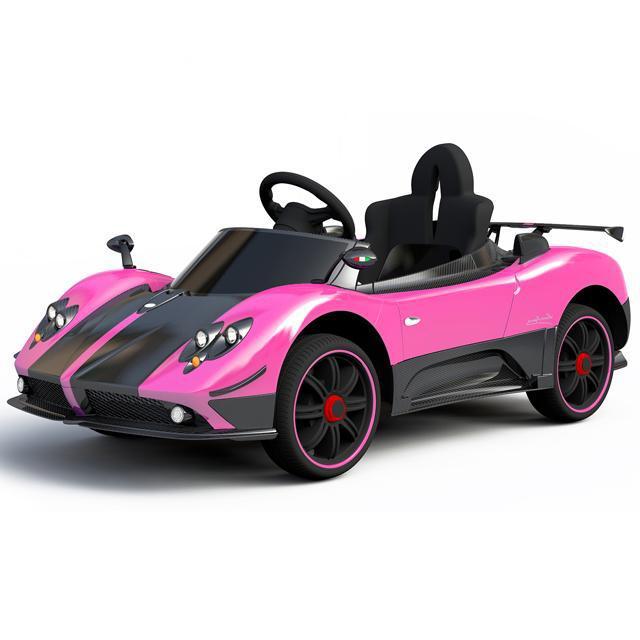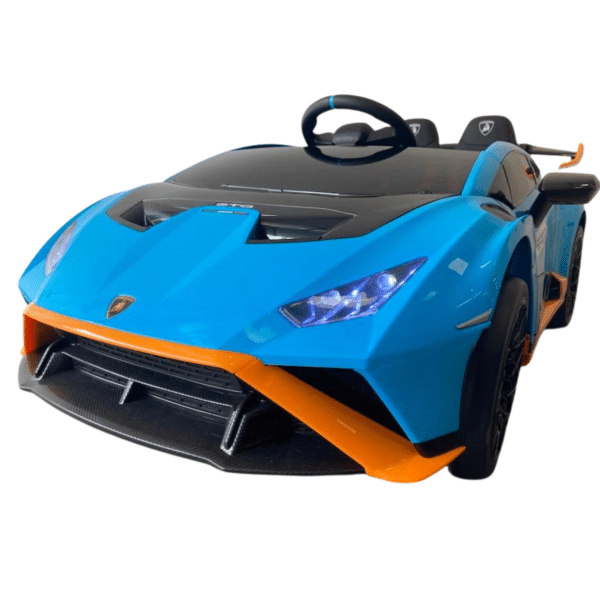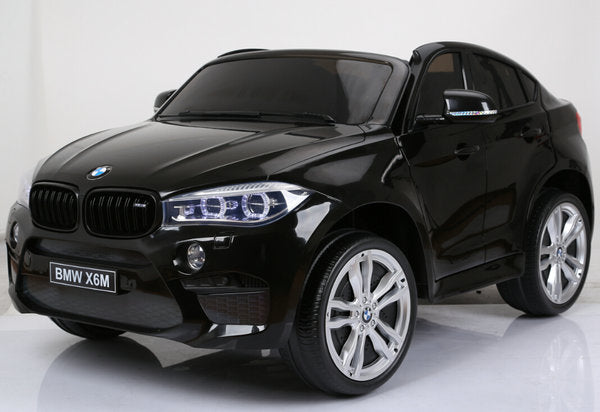Great Reasons On Choosing Remote Control Childrens Cars
Great Reasons On Choosing Remote Control Childrens Cars
Blog Article
What Do I Need To Know About Battery Life And Charging Time Of An Electric Ride-On Kids Car?
Understanding the battery time and life of an electric kid's car is vital to ensuring your child enjoys a fun and safe ride. Here's what you need to know - Battery Type -
The majority of electric vehicles for children are powered by rechargeable batteries. They can be either lead-acid or lithium-ion. Lithium-ion batteries have a longer life span and quicker charging times than lead acid batteries.
Battery Capacity
The battery capacity is expressed in ampere hours (Ah) and watt hours (Wh). This is the amount of time the ride-on will last on a single charging. High capacity batteries allow for longer play time without the need for recharge.
Run Time -
The time of a car's runtime is the amount of time it can run continuously on only one charge of battery. This depends on a number of factors, including the battery, the motor as well as the terrain and the weight of the rider.
The typical run time for electric ride-ons is between 30 to 2 hours. Batteries with a large capacity can provide more time for running.
Charge Time
The charging time is the length of time it takes for the battery to fully recharged after it has been depleted. Charging times can vary depending on the battery's capacity, charger specs, and charging method.
The charging times for electric rides on cars are typically between 8-12 hours. Certain models offer faster charging particularly those with lithium-ion batteries.
To ensure safety and long-lasting battery life, it is essential to recharge the battery in accordance with the instructions of the manufacturer. The battery's performance and its lifespan could be affected negatively through overcharging or undercharging it.
Charging Method
Electric ride-on vehicles typically have a charging station that plugs into a standard outlet for homes. Some models can have quick charging or even a smart charger that monitors the battery's status of charge and adjusts the charging speed in line with the state of charge.
To ensure that there is no damage to the battery or electrical system, ensure that the charging connector and port are compatible with the chargers that come in your ride-on car.
Batteries Additional
Some electric rides-on-cars offer an possibility to purchase additional batteries, or spare batteries, for extended playtime. Having extra batteries on hand lets you switch out batteries that are depleted for fully charged ones, which reduces interruptions between play sessions.
Being aware of the life span of your kids' electric ride-on car and its charging time will allow you to ensure that your child enjoys thrilling and enjoyable adventures while exploring their world. Battery life can be increased by regularly charging the battery and employing proper charging methods. See the top kids ride on cars for website info including a toy car, electric two seater cars, toy car, toy ride, cars pedal car, childs electric ride on car, childrens electric cars, digger ride, childrens electric cars, childrens electric cars and more. . 
What Are The Models For Outdoor And Indoor Kids Cars Designed?
The models of cars for kids come with specific features that are suited to various environments and usage scenarios regardless of whether they're indoors or outdoors. This is how the designs differ from indoor Use Cars The Indoor Use Cars
Size and Weight- Cars designed for indoor use will be smaller in dimensions and weight and therefore easier to maneuver within small spaces. This includes playrooms and living spaces. They're compact enough to navigate narrow spaces and corners without damaging furniture or walls.
Low Ground Clearance - Indoor cars have low ground clearances to avoid being stuck or caught on obstacles such as carpets, rugs, or thresholds. This ensures seamless and uninterrupted movement over indoor surfaces, without the risk of getting stuck or tipped over.
Smooth Wheels. The majority of cars that are indoor have wheels made from materials that are smooth like rubber or plastic. These wheels offer better grip and traction on smooth surfaces, like laminate flooring, hardwood floors or tile. They are designed to minimize the sound of the vehicle and to prevent scratching indoor surfaces.
Limit Speed - Vehicles designed to be used indoors usually have smaller maximum speeds to guarantee the safety of operation and control within restricted areas. This helps prevent accidents or collisions with furniture, walls or any other obstacles that are commonly encountered in indoor areas.
Outdoor Use Cars -
Durable Construction: Cars designed for outdoor use are made of robust materials such as hard plastic or steel that can withstand rough handling, elements of the outdoors like moisture and sunlight. They are less likely to suffer from wear and tears caused by exposure to outdoor conditions.
Greater Ground Clearance: Outdoor use vehicles have a higher level of ground clearance to navigate uneven terrain or bumps encountered in the outdoors. They are now able to navigate rough surfaces like pavement as well as gravel and grass.
Traction tires - Tires for outdoor vehicles typically come with treads and patterns that provide greater grip and traction when driving on slippery or uneven terrains. This gives you stability and control when driving in the outdoors, and prevents sliding or sliding.
Weather Resistance. Outdoor cars are often equipped with weather-resistant parts like sealed electronics, waterproof casings and rust-resistant materials. This is in order to shield them from environmental damages. The car is able to be subjected to rain, mud and puddles with no loss of performance.
High Speed - Outdoor use cars usually have faster maximum speeds to accommodate open spaces and longer distances commonly encountered outdoors. It offers a thrilling, adventurous experience for children who wish to experience the outdoors.
Be aware of these features and traits when choosing a model for your child's vehicle. It is designed to the conditions and uses that you envision whether indoors, outdoors or both. You can be sure of a long-lasting, fun and safe playing experience. Read the recommended go here on kids ride on cars for more examples including toy in car, toy the car, childs electric ride on car, toy a car, childs car toy, ride ons, car toy toy, electric ride on, toy car, toy cars toy car and more. . 
How Do I Decide The Cost Of My Child's Ride-On Vehicle?
When making a decision on your budget, it is important to consider factors like features, durability, longevity and your financial situation. You can determine the most affordable cost and price by looking up the average price.
Find out the cost average for the model of kid's ride-on vehicle you would like to purchase. Toy stores, online retailers, and websites of manufacturers are a great source of price information.
Choose Must-Have Features to Have
Choose the features your child requires for their safety and enjoyment. Ride-on vehicles with features such as realistic sound effects seats, belts for seats, remote control, and functional headlights could cost more.
Prioritize features by comparing your budget with your child's preferences.
Be aware of durability and longevity Consider longevity and durability
It is recommended to look for ride-on automobiles that are built with sturdy materials. This includes high-quality metals and plastics. They must be durable enough to stand up to the elements of the outdoors as well as the everyday use.
Check reviews and get recommendations from other parents in order to assess the long-term durability and performance of different models. An investment that is more upfront in a durable ride-on car may result in long-term savings because it will not require frequent repairs or replacements.
Compare prices among retailers
Compare prices from different retailers and find the best deal. Check out online retailers and local department and toy stores for discounts and bargain pricing.
You can save money by keeping your eye on clearances, sales, and discounts.
Determine the additional cost
Be aware of any additional costs that come with the purchase of the ride-on car for your child, such as shipping fees and taxes or other accessories (e.g. spare batteries, safety equipment).
Budget the cost of your vehicle, including the maintenance and accessories.
Set a realistic budget -
Make a budget plan that is realistic and aligned with your goals and requirements. Calculate the maximum you're prepared to shell out for your child's ride-on while taking into consideration the features, durability, or longevity.
Don't overspend or stretch your budget to include unnecessary features in your child's game.
Think about Long-Term Value
A children's ride-on vehicle which is robust, dependable and capable of growing with your child can be a great investment. In the long term investing in a feature-rich, high-quality car could be more advantageous over cheaper alternatives.
When buying a kid's ride-on vehicle, establish a price range and compare features, durability and length of time. This will allow you to find the most value for money. It is important to prioritize features that are essential to ensure your child's happiness and safety, while still keeping within your budget. View the most popular JCB ride on toys kidscars.co.uk advice for more recommendations including car toy toy, kiddies cars, toy the car, toy toy cars, electric two seater cars, childs ride on car, two seater electric cars, a toy car, lambo toy car, car for toy and more. .